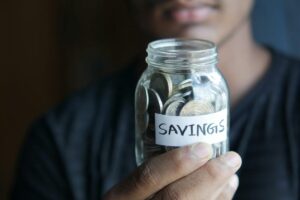On the 20th of March, nine days after his first budget, Sunak returned to the House of Commons to announce an updated plan to deal with the unfolding situation.
“Let me speak directly to people’s concerns. I know that people are worried about losing their jobs. About not being able to pay the rent or the mortgage. About not having enough set by for food and bills. I know that some people in the last few days have already lost their jobs. To all those at home right now, anxious about the days ahead, I say this: you will not face this alone. But getting through this will require a collective national effort, with a role for everyone to play – people, businesses and government. It’s on all of us.”
“To meet our commitment to that effort, I am today announcing a combination of measures unprecedented for a Government of this nation.”
It is no exaggeration to say the measures were unprecedented, The Furlough scheme to cover 80% of people’s wages up to £2,500 pm for up to three months where there was no work for them to do would be supporting the incomes of 9.4 million at its peak. When Sunak said ‘I am placing no limit on the amount of funding available for the scheme. We will pay grants to support as many jobs as necessary’ did he realise he would rack up a bill of over 35.4 billion pounds by the 16th of August, with the clock then extended to the end of October?
He extended CBILS interest support from the first six months being compliments of HMG to the first twelve months and deferred £30bn worth of business taxes to the end of the year, an extraordinary move for a Treasury increasingly focused on timely tax payment. He introduced cash grants worth £25,000 for small business properties and beefed up Universal Credit and benefits for the selfemployed, The welfare bill was £7bn with a further billion on rent support.
In nine days, the Chancellors COVID bill rose from £12bn to over £50bn. And there were many more cheques to write. BoE Base rates had fallen to just 0.1%.
As the COVID crisis ramped up rapidly, Boris Johnson announced the total lockdown of the UK in a television announcement on the 23rd of March. It was watched by 27.1 million people; a national event exceeded only by the World Cup of 1966, and the Funeral of Princess Diana.
The game had changed dramatically.
On the 26th of March Sunak announced a support package for the self-employed, capped at £7500 for the first tranche in July. This was a long wait for the self-employed and large numbers of self-employed were excluded, either as a result of paying via dividends or simply not having traded during the qualifying period that set the income level.
As the lockdown bit hard into the economy Sunak extended the furlough scheme by a month on the 11th of April, just a month on from his first budget. By the 12th of May he extended the scheme further to the end of October, although taking the opportunity to taper the benefit to employers to reduces costs, now heavily escalating. This was cold comfort to many self-employed people who were left in the cracks of policy, and reflected in the increase by 856,500 job seeker claimants in April alone.
Problems with Banks processing CBILS forced Sunak to devise a new scheme, the Coronavirus “Bounce Back Loan” BBLs on the 27th of April. This scheme offers a loan 100% guaranteed by the Government of 25% of turnover capped at £50,000 for small companies, with no capital repayment for a year, an interest rate set at 2.5% and the Government picking up the tab for the first year. There were just seven questions to answer on the application and funds in your account in just 24 hours.













